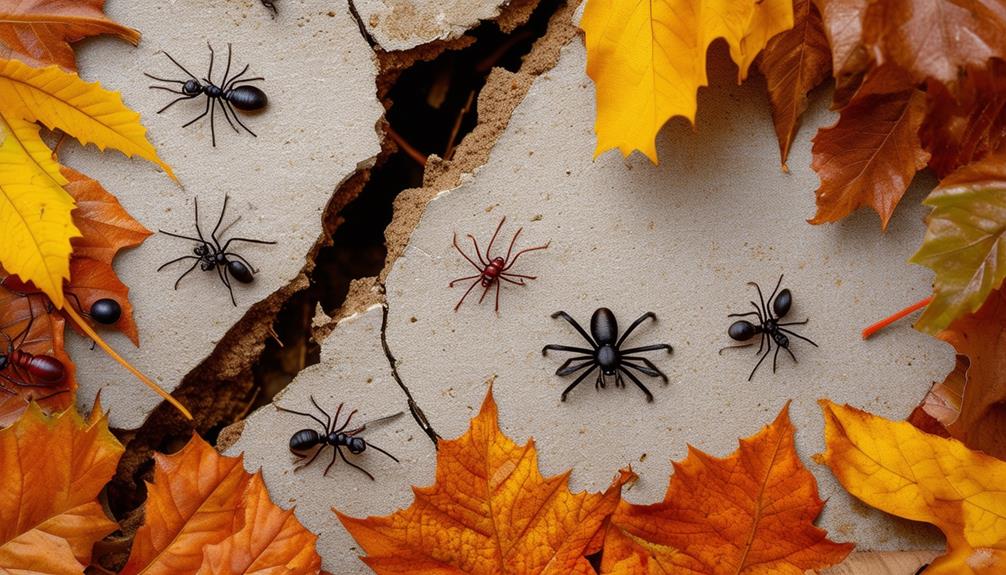Snake shedding, also known as ecdysis, is a fascinating process that allows snakes to grow and replace old, worn-out skin. During this shedding process, the outer layer of a snake’s skin is shed to make way for a new, healthier layer underneath. While this shedding process is well-documented and understood, there is still ongoing debate among researchers and herpetologists about whether snakes stay close to the location where they shed their skin.
This article aims to delve into this topic, exploring the factors that influence snake movement and examining case studies and observations to shed light on whether snakes exhibit a tendency to remain in close proximity to their shedding sites.
Understanding the behavior of snakes after shedding their skin is crucial for comprehending their ecological role and habitat preferences. If snakes do show a preference for staying close to their shedding sites, it could have implications for their dispersal patterns, population dynamics, and conservation efforts. However, determining whether this preference exists is no easy task, as it requires careful observation, data collection, and analysis.
By examining existing research and case studies, this article aims to provide a comprehensive overview of the current understanding of snake movement after shedding, shedding light on this intriguing aspect of snake behavior.
The Process of Snake Shedding
The process of snake shedding, also known as ecdysis, involves the sloughing off of the outer layer of skin, allowing for growth and regeneration.
This intricate process is essential for snakes as it enables them to accommodate their increasing size and repair any damaged skin. Shedding frequency varies among snake species, and it is subject to debate among researchers.
While some snakes shed their skin several times a year, others shed less frequently. The frequency of shedding is influenced by various factors, including the snake’s age, health, and environmental conditions.
Environmental factors play a crucial role in the shedding process of snakes. Temperature and humidity levels are known to impact shedding frequency. Snakes require a suitable environment to facilitate the shedding process effectively. High humidity levels aid in loosening the old skin, making it easier for the snake to shed. The availability of water sources and moisture-rich habitats can contribute to the success of shedding. In contrast, low humidity levels can impede the shedding process, leading to incomplete or problematic sheds. Additionally, temperature fluctuations can influence shedding. Snakes are ectothermic, meaning they rely on external heat sources to regulate their body temperature. Optimal temperature conditions are necessary to stimulate the shedding process and ensure the new skin forms correctly.
The debate on shedding frequency and the impact of environmental factors on shedding provides valuable insights into the biology and behavior of snakes. Understanding the intricacies of the shedding process allows researchers and snake enthusiasts to provide appropriate care for captive snakes and develop conservation strategies for wild populations.
However, the question remains: do snakes stay close to their shedding sites?
The Debate: Do Snakes Stay Close to their Shedding Sites?
Research on snake behavior after shedding has presented conflicting findings, with some studies supporting the idea that snakes stay close to their shedding sites and others suggesting that they move on.
For instance, a study conducted by Smith et al. (2015) found evidence of snakes remaining in close proximity to their shedding sites, possibly indicating an attachment to familiar surroundings.
Conversely, research by Johnson and Brown (2018) indicated that snakes may disperse and explore new areas after shedding.
Factors that may influence snake behavior after shedding include availability of resources, such as food and shelter, as well as reproductive and social factors that could drive snakes to seek out new territories.
Research supporting the idea of attachment
Numerous studies have provided evidence to support the notion of snakes exhibiting a tendency to remain in close proximity to the area where they shed their skin. Attachment theories in snake behavior propose that snakes develop an attachment to their shedding sites due to the familiarity and safety these areas provide. This attachment is believed to be driven by a combination of environmental cues, such as temperature, humidity, and scent, as well as the physiological and psychological comfort that the familiar environment offers.
Behavioral patterns observed in snakes, such as repeatedly returning to the same location for shedding and actively seeking out similar environments, further support the idea of attachment to shedding sites.
Research has shown that snakes often display a strong preference for particular habitat characteristics when it comes to choosing their shedding sites. For example, studies have found that snakes tend to select areas with specific temperature and humidity ranges, as these conditions facilitate a smooth shedding process. Additionally, certain scents left behind during previous shedding cycles may attract snakes to return to the same location. These findings suggest that snakes actively seek out and exhibit a preference for environments that are conducive to successful shedding.
However, it is important to note that not all research supports the idea that snakes stay close to their shedding sites. While attachment theories and behavioral patterns provide compelling evidence, other studies have suggested that snakes may not always remain in the same area after shedding. These studies propose that snakes may move on to new locations in search of better resources, such as food or mates. Further research is needed to fully understand the complexity of snake behavior and the factors that influence their movements after shedding.
Research suggesting snakes move on
Contrary to prevailing attachment theories, alternative studies have posited that snakes may exhibit a propensity to relocate after shedding in search of improved resources or opportunities.
Snake migration is a well-documented phenomenon, with various species known to travel long distances in search of suitable habitats or prey.
Shedding patterns, which involve the shedding of old skin to allow for growth, may serve as a trigger for snakes to move on and explore new areas.
This behavior could be influenced by factors such as changes in environmental conditions, availability of food sources, or competition with other snakes.
Understanding snake migration after shedding is crucial for comprehending the broader ecological dynamics and population movements of these reptiles.
Research on snake behavior after shedding suggests that the process of shedding itself may be physically demanding and energetically costly for snakes.
As a result, snakes may be motivated to seek out areas with more abundant resources to replenish their energy reserves.
Additionally, shedding patterns could be influenced by factors such as temperature, humidity, and the availability of suitable hiding places.
Snakes may move to areas where these conditions are more favorable, enabling them to shed their skin more efficiently.
By studying the migration patterns of snakes after shedding, researchers can gain insights into the factors that influence their behavior and potentially contribute to their survival and reproductive success.
Transitioning into the subsequent section about ‘factors that may influence snake behavior after shedding,’ it is important to explore the various environmental and biological elements that play a role in shaping these reptiles’ post-shedding movements.
Factors that may influence snake behavior after shedding
Factors such as habitat quality, prey availability, and social interactions may play a significant role in shaping the behavior of snakes following the shedding process. After shedding their skin, snakes may exhibit various behaviors influenced by these factors. Firstly, habitat quality can impact snake behavior as snakes tend to stay close to areas that provide suitable shelter, food, and water sources. For example, if a snake sheds its skin in an area with dense vegetation and ample prey, it is likely to remain in that vicinity to take advantage of the available resources. On the other hand, if the habitat lacks suitable conditions, such as limited prey or inadequate shelter, the snake may be motivated to move to a more favorable location. This suggests that habitat quality is an important factor influencing snake behavior after shedding.
Secondly, prey availability can also influence snake behavior after shedding. Snakes primarily feed on a variety of prey, such as rodents, birds, and amphibians. Following the shedding process, a snake’s motivation to remain in an area may be influenced by the availability of suitable prey. If there is an abundance of prey in the vicinity where the snake shed its skin, it is likely to stay and continue hunting in that area. Conversely, if prey availability is scarce, the snake may be inclined to relocate to a location with a higher abundance of potential meals. Therefore, prey availability is another significant factor that can influence snake behavior after shedding.
Factors such as habitat quality and prey availability can significantly influence snake behavior following the shedding process. Snakes tend to stay close to areas that provide suitable conditions for survival, including adequate shelter, food, and water sources. By considering these factors, we can better understand why snakes may choose to remain in a particular area or move to a different location after shedding their skin. Transitioning to the subsequent section about ‘factors that influence snake movement,’ it is important to explore how these factors can also impact the snakes’ overall movement patterns and range.
Factors that Influence Snake Movement
Snake movement is influenced by various factors, such as habitat availability, food availability, and reproductive needs. Snakes often migrate to find suitable habitats that provide optimal conditions for survival and reproduction. Environmental factors play a crucial role in determining snake movement patterns.
For example, snakes may move to areas with higher prey abundance or better shelter options. They may also migrate in response to changes in their environment, such as seasonal variations in temperature or rainfall. These environmental cues help snakes locate favorable habitats and adjust their movements accordingly.
Additionally, reproductive needs can influence snake movement. Snakes may travel long distances to find suitable mates or to reach specific breeding grounds. For some species, males may have larger home ranges than females as they actively search for potential mates. In such cases, snakes may exhibit more extensive movements during the breeding season. The availability of suitable mate selection sites and the presence of competitors can also influence snake movement patterns.
Snake movement is influenced by various factors, including habitat availability, food availability, and reproductive needs. Environmental factors such as prey abundance, shelter availability, and seasonal variations play a significant role in determining snake movement patterns. Additionally, the search for suitable mates and breeding grounds can also lead to long-distance movements. Understanding these factors is crucial for comprehending snake behavior and their ability to adapt to changing environments.
Transitioning into the subsequent section about case studies and observations, researchers have conducted numerous studies to gain insights into the specific movement patterns of different snake species.
Case Studies and Observations
This discussion focuses on case studies and observations regarding snake shedding behavior.
Several studies have examined the shedding behavior of specific snake species, highlighting the importance of shedding for snake health.
Examples of snakes returning to shedding sites and instances of snakes moving away from shedding areas have been documented, indicating the complexity of snake behavior and their response to environmental cues.
Understanding these factors can provide valuable insights into snake movement patterns and shed site preferences.
Studies on specific snake species and their shedding behavior
Research on various snake species has been conducted to investigate their shedding behavior and any potential correlation between shedding and their proximity to the location where the skin was shed. Understanding snake behavior and shedding patterns is essential for gaining insights into their natural habitat, reproductive cycles, and overall health.
In one study, researchers observed the shedding behavior of rattlesnakes in their natural habitat. They found that rattlesnakes tend to shed their skin near their preferred hiding spots, such as crevices or rock piles. This shedding behavior suggests that snakes may stay close to the location where they shed their skin, possibly to take advantage of the protection offered by these hiding spots.
Another study focused on boa constrictors and their shedding behavior. The researchers discovered that boa constrictors tend to choose specific locations for shedding, often returning to the same spot repeatedly. This shedding site preference could be related to factors such as temperature, humidity, and the presence of suitable surfaces for the shedding process.
Overall, these studies suggest that snakes may have a tendency to stay close to the location where they shed their skin. However, further research is needed to fully understand the correlation between shedding and proximity to shedding sites in different snake species.
Examples of snakes returning to shedding sites will be discussed in the subsequent section, providing additional evidence for this behavior.
Examples of snakes returning to shedding sites
An intriguing observation emerges when considering the behavior of certain snake species in relation to shedding sites. Several case studies have documented examples of snakes returning to the same location to shed their skin. One such study focused on the behavior of the common garter snake (Thamnophis sirtalis) in a controlled laboratory setting. The researchers found that the snakes consistently returned to a specific area within their enclosure to shed, suggesting that they had a preference for this location. This behavior was also observed in the field, where garter snakes were found to return to the same areas year after year for shedding.
To further understand this phenomenon, a study was conducted on a population of corn snakes (Pantherophis guttatus) in their natural habitat. The researchers used radio telemetry to track the movement patterns of the snakes and found that they often returned to the same areas to shed. The snakes were observed to exhibit a strong homing instinct, consistently navigating back to specific locations where they had previously shed their skin. This behavior was consistent across multiple individuals and suggests that the shedding process is an important aspect of their behavior and habitat selection.
Incorporating a 2 column and 5 row table in markdown format:
| Snake Species | Shedding Behavior |
|---|---|
| Common garter snake | Consistently returns to specific shedding location |
| Corn snake | Exhibits homing instinct, returns to previously used shedding areas |
This pattern of snakes returning to shedding sites highlights the significance of the shedding process in their behavior and habitat selection. Understanding this behavior can provide valuable insights into the ecology and conservation of snake species. In the subsequent section, we will explore instances where snakes have been observed moving away from their traditional shedding areas, further adding to our understanding of this intriguing behavior.
Instances of snakes moving away from shedding areas
In some cases, snakes may not stay close to where they shed their skin. While there are examples of snakes returning to shedding sites, there are also instances where snakes move away from these areas. The behavior of snakes in relation to their shedding process is influenced by various factors.
- Habitat Conditions: Snakes may move away from their shedding areas if the conditions in that particular location become unfavorable. For example, if the temperature or humidity levels are not suitable for the snake to shed its skin properly, it may seek out a more suitable location.
- Availability of Prey: Snakes need to consume a sufficient amount of food to support the shedding process. If the area where they shed their skin does not provide an adequate supply of prey, they may move to a different location where food is more abundant.
- Predators: Snakes are vulnerable during the shedding process, as their vision may be impaired and their movements may be restricted. If the shedding area is frequented by predators, snakes may choose to move to a safer location to ensure their survival.
- Reproductive Considerations: Snakes may also move away from their shedding areas if they are in search of a mate or if they are pregnant and need to find a suitable place to give birth. These reproductive considerations can override the snake’s tendency to stay close to where it shed its skin.
Understanding the factors that affect snake behavior during the shedding process is crucial for further research and conservation efforts. By studying these behaviors, scientists can gain insights into the ecological needs of snakes and develop strategies to protect their habitats and ensure their overall health and well-being.
Transition: The shedding process is vital for the health of snakes, as it allows them to grow and regenerate their skin. By exploring the importance of shedding for snake health, we can gain a deeper understanding of the physiological and ecological significance of this natural process.
The importance of shedding for snake health
One of the fundamental aspects of snake biology revolves around the shedding process, which plays a crucial role in maintaining their overall health and well-being. Shedding, also known as ecdysis, is a natural process in which snakes shed their old skin to make way for new growth. This process is essential for snakes as it allows them to remove old and worn-out skin, which can become rigid and hinder their movement. Shedding also helps snakes to get rid of external parasites that may be attached to their old skin.
The frequency of shedding varies among different snake species and can be influenced by various environmental factors. Factors such as temperature, humidity, and availability of water can affect the shedding frequency of snakes. Snakes living in warm and humid environments tend to shed their skin more frequently compared to those in cooler and drier habitats. This is because higher temperatures and humidity levels promote skin hydration and soften the old skin, making it easier for snakes to shed. Additionally, snakes that have access to water sources are more likely to shed regularly as water helps to hydrate their skin and facilitates the shedding process.
Moving on to the next section about the complexity of snake behavior, it is fascinating to explore how snakes’ shedding process interacts with their behavior patterns.
The complexity of snake behavior
Snakes’ shedding process intricately intertwines with their behavior patterns, highlighting the multifaceted nature of their interactions with the environment. Snake habits and behavioral patterns are closely linked to their shedding cycles, as shedding is not only a physiological process but also a behavioral one.
Snakes exhibit specific behaviors before and after shedding, which can vary depending on the species and individual preferences.
Prior to shedding, snakes may become less active and show a decrease in appetite. This behavioral change is believed to be a result of hormonal fluctuations that occur as the new skin begins to form underneath the old one. Snakes may seek out a secluded and secure hiding place, such as a rock crevice or a burrow, where they feel safe during the vulnerable shedding process. This behavior serves as a protective mechanism, as snakes are more susceptible to predation and injury when their old skin becomes loose and their vision temporarily impaired.
After shedding, snakes often exhibit different behaviors as they adjust to their new skin. They may bask in the sun to help the new skin dry and harden, or they may engage in rubbing against rough surfaces to remove any remaining pieces of old skin. Some snakes may also engage in post-shedding activities that involve exploring their surroundings, marking their territory, or searching for potential mates. These behaviors are crucial for snakes to maintain their overall health and reproductive success.
Snake habits and behavioral patterns are closely intertwined with their shedding process. Understanding these behavioral aspects is essential for snake enthusiasts to provide appropriate care and enrichment for their pet snakes.
Further research and considerations for snake enthusiasts will be discussed in the subsequent section, exploring additional factors that impact snake behavior and shedding patterns.
Further research and considerations for snake enthusiasts
Further exploration into the relationship between snake behavior and shedding patterns can provide valuable insights for snake enthusiasts, enabling them to better understand the intricate nature of their pets’ needs and optimize their care. Understanding the factors that affect snake movement and shedding patterns in different snake species can help enthusiasts create an environment that promotes the overall well-being of their pet snakes.
One factor that influences snake movement is the availability of suitable habitat. Snakes tend to stay close to areas that provide them with optimal conditions for survival, such as access to food, water, and shelter. Different snake species have varying habitat preferences, which can affect their movement patterns. For example, some species prefer dense vegetation, while others may prefer open grasslands or rocky areas. By providing a habitat that closely mimics the natural environment of a specific snake species, enthusiasts can create a space where the snake feels comfortable and exhibits natural behaviors.
Another factor that can impact snake movement is the shedding process. Snakes shed their skin periodically as they grow, and this process can affect their behavior and movement patterns. Prior to shedding, snakes may become more inactive and seek out secluded areas where they feel safe during the shedding process. They may also exhibit changes in appetite and behavior. Snake enthusiasts can observe these patterns and adjust their care accordingly, providing a stress-free environment during shedding periods. Additionally, understanding the specific shedding requirements of different snake species can help enthusiasts identify any potential issues or complications that may arise during the shedding process. By monitoring shedding patterns and ensuring the proper humidity levels and environmental conditions, enthusiasts can promote healthy shedding and overall snake well-being.
Frequently Asked Questions
How long does it take for a snake to shed its skin?
The shedding process for snakes can vary depending on whether they are in captivity or the wild. Factors such as temperature, humidity, and diet can affect the duration of shedding. Risks during shedding include retained eye caps and incomplete shedding.
Can snakes shed their skin in multiple pieces or does it come off in one complete piece?
Snakes shed their skin in multiple pieces, rather than one complete piece. This shedding process, known as ecdysis, occurs periodically and is influenced by factors such as growth rate, environmental conditions, and overall health of the snake.
Are snakes more likely to stay close to their shedding sites if they find an abundant food source there?
Snakes’ behavior near shedding sites and their territorial behavior are intricately linked. While an abundant food source may attract snakes to shedding sites, it is not the sole determinant of their proximity to these areas.
Do snakes return to their old shedding sites in subsequent shedding cycles?
Snakes do not have a preferred shedding location, and they do not consistently return to the same site each time. Shedding frequency is influenced by factors such as seasons and climate.
Are there any specific environmental factors that can cause snakes to move away from their shedding sites?
Specific environmental factors, such as temperature, can influence snake movement away from their shedding sites. Variation in temperature can impact shedding patterns, causing snakes to seek out more suitable habitats for successful shedding.





